Politics
Kenya’s Presidents and Deputies: History of Conflicts and Impeachment
Amid the novelty of the impeachment process, it’s easy to forget that it is the norm for Kenyan presidents to fall out with their deputies.

By Gabrielle Lynch, Professor of Comparative Politics, University of Warwick
Initially published @ https://theconversation.com/
The process of removing Kenya’s deputy president Rigathi Gachagua is part of a long history, dating back to independence, of fallouts between the president and his deputy. The difference this time around is the process.
Historically, presidents have fired their deputies. But the adoption of a new constitution in 2010, saw the introduction of a process for impeachment – for both the president and the deputy – that’s run by the legislature. This is the first time it’s been used.
On 8 October 2024, members of Kenya’s national assembly voted to impeach Gachagua on grounds that included corruption, insubordination and ethnically divisive politics. The case now moves to the senate where members will hear the charges – and Gachagua’s defence – and vote.
If at least two-thirds of senate accept the charges, and Gachagua’s legal challenges fail, then Gachagua will make history as Kenya’s first deputy leader to be impeached.
So far, President William Ruto has stayed silent on the matter, but the process would not be proceeding without his blessing.
Amid the novelty of the impeachment process, it’s easy to forget that it is the norm for Kenyan presidents to fall out with their deputies. As a political scientist interested in Kenya’s ethnic politics and democratisation, I argue that this is because of how deputies are selected in the first place.
Deputies are initially selected largely on pragmatic grounds as people who bring something useful to a political alliance. This could be resources, a support base or a reputation for being a good technocrat or administrator.
They’re not usually people with whom the president has a strong and continuous personal relationship or someone with whom they share a clear political ideology. Neither are they usually someone who has made their way up through a political party.
This has brought about a long history of tensions and fallout between Kenya’s presidents and their deputies.
History of fallouts
Independent Kenya’s first vice president, Oginga Odinga, saw his ministerial portfolio gradually reduced by President Jomo Kenyatta. Kenyatta then replaced Odinga as vice president of the ruling Kenya African National Union (Kanu) in 1966 further undermining his powers. Soon after, Odinga joined the opposition Kenya’s People’s Union.
His successor, Joseph Murumbi, resigned within months. The official reason given was ill health, but it is widely believed that Murumbi was troubled by corruption and authoritarianism within the Kenyatta regime.
Kenya’s second president, Daniel arap Moi, elected Mwai Kibaki as his first deputy. Kibaki was dropped after a decade. He went on to form an opposition party as soon as Kenya shifted to multi-party politics in 1992.
Moi’s second vice president, Josephat Karanja, resigned after a year to avoid a vote of no confidence for allegedly plotting to overthrow the government.
Moi’s third deputy, George Saitoti was sidelined to pave way for Uhuru Kenyatta’s nomination as the party flagbearer in 2002. Moi’s final deputy, Musalia Mudavadi, fell with the rest of the Kanu government in the 2002 elections.
As Kenya’s third president, Kibaki similarly oversaw a regular change of guard. His first deputy, Michael Wamalwa, died after a few months in office. His second, Moody Awori, lost his seat in the 2007 election.
Kibaki’s third deputy, Kalonzo Musyoka, joined the president during Kenya’s post-election violence of 2007-08. He left at the end of his term in 2013 to run with Raila Odinga in the 2013, 2017 and 2022 presidential elections.
Kenya’s fourth president, Uhuru Kenyatta, was the only leader to have the same deputy, William Ruto, for his full term as president – from 2013 to 2022. However, relations between Kenyatta and Ruto were hardly rosy. The two fell out after the 2017 elections as Kenyatta teamed up with long-standing opposition leader, Raila Odinga. Ruto beat Odinga, Kenyatta’s favoured candidate in the 2022 elections.
Lessons to learn
Because deputies are selected for their practical value, the person who made a good deputy at one point in time can come to be seen as a liability or threat as the political context changes.
For example, at independence, Oginga Odinga made an excellent ally for Jomo Kenyatta. He had some resources and was a proven mobiliser. He brought a support base. However, within a few years, Odinga became a problem for the president as a more radical faction within the ruling party coalesced around him.
Similarly, Ruto made an excellent ally for Uhuru Kenyatta when they both faced charges for crimes against humanity at the International Criminal Court. The two fell out once Kenyatta had won his second and final term, and Kenyatta turned to his succession.
Gachagua was useful to Ruto in 2022. He had personal wealth, was an effective mobiliser and hailed from central Kenya where the election looked to be won or lost. However, once elected, Gachagua’s populist statements and reputation for ethnic bias became more of a liability.
Second, as contexts change, someone else can soon come to be seen as more useful as second in command.
For Jomo Kenyatta, Moi had shown his utility and loyalty during the “little general elections” of 1966, which effectively sidelined the Kenya People’s Union and Oginga Odinga.
Kithure Kindiki, Kenya’s interior cabinet secretary, is the current frontrunner to replace Gachagua. He is seen as better able to negotiate with the international community, especially during a critical economic period for Kenya as it seeks new International Monetary Fund loans.
Third, being the country’s vice or deputy president comes with a lot of opportunities to network. These interactions have often led individuals to be seen as a growing threat, or as actively plotting against the president. They may also be seen as a future challenger.
History has shown that there is no ideal way of dealing with such a potential challenger, leading subsequent presidents to try different approaches.
Current context
Ruto and Gachagua have clearly fallen out. Their differences became apparent soon after the 2022 elections. However, they came into sharp relief in the face of anti-tax protests in June 2024. There were subsequent allegations that Gachagua and some of his allies had helped to finance the protests.
The question, therefore, isn’t why they have fallen out but why Gachagua is being impeached now.
Ultimately the answer to this can only be known by a few individuals. But perhaps an indication of the answer lies in the emotions the fallout has stirred: a desire to distract the public and show that the government is taking action to deal with Kenya’s ongoing economic crisis. There may also be a desire to undercut Gachagua before he can build national networks.
Ruto has the numbers in the senate to see the impeachment process through. But this is a dangerous game. Those sidelined have a habit of coming back to haunt their former allies.
At the moment, most Kenyans are supportive of the impeachment process, but many also feel that Gachagua is being unfairly targeted especially in central Kenya, where a majority oppose the process.
While a successful impeachment might see Gachagua barred from holding public office, this wouldn’t necessarily mean an end to his career as an effective political mobiliser.
The next few months – and the narratives that emerge about why Ruto and Gachagua fell out – will be critical in determining both their futures.
Politics
William Ruto’s First Year: Promises Made, Struggles Persist
President Ruto cannot fulfil his manifesto unless he curbs runaway corruption and holds culprits accountable. The rule of law requires recovering proceeds of crime and prosecuting offenders for economic sabotage. This strategy would reduce the need to overburden Kenyans with taxes and additional borrowing.
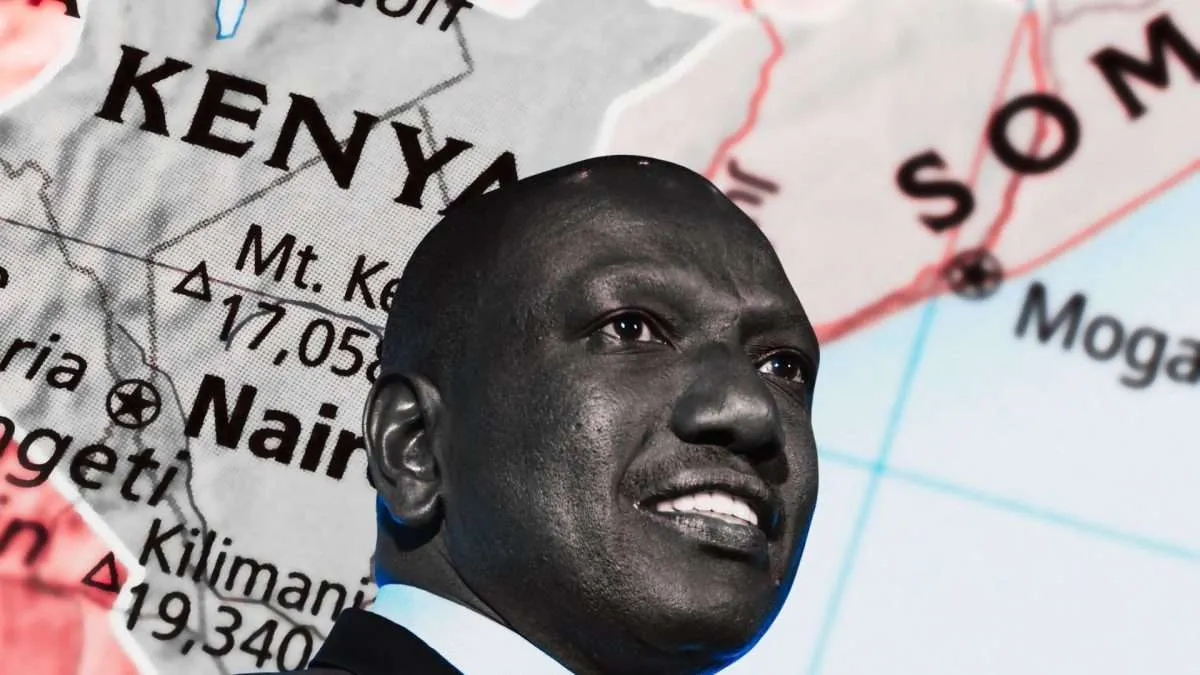
: Kenya’s President William Ruto faces challenges in fulfilling promises on governance, the economy, and national cohesion. Can he turn things around before 2027?
It’s more than a year since President William Ruto was sworn into office as Kenya’s fifth president.
He took office during a period of rising food and fuel prices, high unemployment, and a troubling debt burden in Kenya.
During the election campaign, Ruto promised to fix an economy afflicted by corruption and ineptitude. He promised to entrench good governance and place the poor at the centre of economic policy.
He pledged to address ethnicised politics and to uphold constitutionalism and the rule of law.
Ruto’s promises were significant. The rule of law and constitutionalism are key to economic planning and development, governance and equitable sharing of national resources.
They are the guardrails against impunity, democratic backsliding, lawlessness and political instability.
Throughout Kenya’s postcolonial period, the political elite have exploited ethnicity to obtain power at the expense of the collective well-being and social cohesion.
Elite entitlement has also weakened state institutions, leading to corruption and impunity.
I have studied democratic transitions, conflict and state building and elections in Africa.
My 2018 book examined how the political class had exploited ethnicity for political and economic advantage, resulting in weak and even dysfunctional state institutions in Kenya.
In his election campaign, Ruto identified the major issues that required urgent attention.
He addressed issues that needed swift action without constitutional changes, such as thawing the tension between the executive and the judiciary, decoupling the police finances from the executive, and taking port operations back to the coastal city of Mombasa from the inland town of Naivasha.
But resolving Kenya’s economic hardships has proved a hard nut to crack, as his 9 November 2023 State of the Nation address acknowledged. Just over a year since he was sworn in, Ruto is no nearer to turning the Kenyan ship around.
ECONOMIC TURBULENCE
As a candidate, Ruto portrayed himself as an outsider to Kenya’s power matrix who was best placed to improve the living conditions of the poor and excluded. But the economy has not improved under his watch. If anything, living conditions have worsened.
The cost of living is higher after a steep increase in the petrol price and the local currency’s loss of value. Ruto’s government has imposed new and increased taxes on Kenyans, ostensibly to reduce or remove the need for external borrowing.
The government was quick to remove fuel and food subsidies but has been slow to address government wastage.
The government’s key strategy was to subsidise fertiliser to boost harvests and achieve food security. It remains to be seen whether this will happen.
More deliberate measures are required to turn around agriculture as the mainstay of the economy.
On the question of centring the poor and marginalised in governance, Ruto focused on the financial sector. The government rolled out the “Hustler Fund” to make credit more affordable.
But the fund’s impact on overall living standards through job creation, for instance, is likely to be cancelled out by a punitive tax regime and a struggling economy.
RULE OF LAW
Ruto’s first public event as president was to approve the appointment of six judges left in limbo by his predecessor, Uhuru Kenyatta. He also made good on his promise to allocate more funding to the judiciary.
However, to entrench the rule of law and constitutionalism calls for more than this. Judicial officers must act with utmost integrity. To affirm equality before the law, errant senior state officers and the political elite must face the law and if found guilty sanctioned decisively.
The Kenyan judiciary is still bedevilled by corruption that impedes access to justice. Disturbingly, it is seen as more inclined to punish the poor while letting the rich and political elite act with impunity.
Ruto himself has obeyed court rulings that went against him, unlike under Kenyatta, when disregard for the law was the norm. Critics, however, including the Law Society of Kenya, have accused his administration of disobeying court orders like his predecessor.
Ruto spoke out against extrajudicial and summary executions and enforced disappearances perfected by the police over the years.
He sought to accord the police financial and operational autonomy. Thus he transferred accounting for the police budget to the police as he had promised.
Despite these changes, a culture of impunity and lack of transparency continues to undermine the Kenyan police. Extrajudicial executions continue. The police must be placed under civilian oversight as envisaged under the constitution.
The failure to set up a commission of inquiry into state capture under his predecessor, as promised during campaigns, dented Ruto’s commitment to the fight against corruption. A year later, a commission of inquiry has not been formed and the issue seems to have been abandoned altogether.
It is unlikely that Ruto will fulfil his manifesto unless he reins in runaway corruption and the culprits are held to account.
The rule of law demands that proceeds of crime be recovered and offenders charged for economic sabotage. This approach would obviate the need to burden Kenyans with taxes and more borrowing.
NATIONAL COHESION
Appointments to government positions have been undermined by the age-old problems of recycling appointees, patronage, nepotism and ethnicity. Just as worrying are senior government officials publicly advancing exclusionary ethnic politics with impunity. Ruto must rein them in.
It is also a setback that Ruto acceded to talks to assuage the opposition elite who had resorted to violent protests against his historic victory. These elitist self-serving talks could lead to constitutional amendments creating more political positions under a cynically flawed logic that this approach enhances national cohesion.
This is an about-turn on Ruto’s part.
Ultimately national cohesion is Ruto’s pressing challenge.
Kenya is divided on many fronts – economic, ethnic, regional and religious – a legacy of previous governments.
Ruto needs to look beyond ethno-regional appointments. For legitimacy and transformation, he needs to ideologically reconnect with and dignify the “hustler nation”, the disenfranchised constituency that propelled him into power. Bar this, he could face an intensely contested reelection bid like his predecessors.
Politics
Rigathi Gachagua’s Impeachment: A Political Conundrum for Ruto’s Administration
Former Deputy President Rigathi Gachagua’s impeachment has transformed Kenya’s political landscape, marking the first event of its kind under the 2010 Constitution.
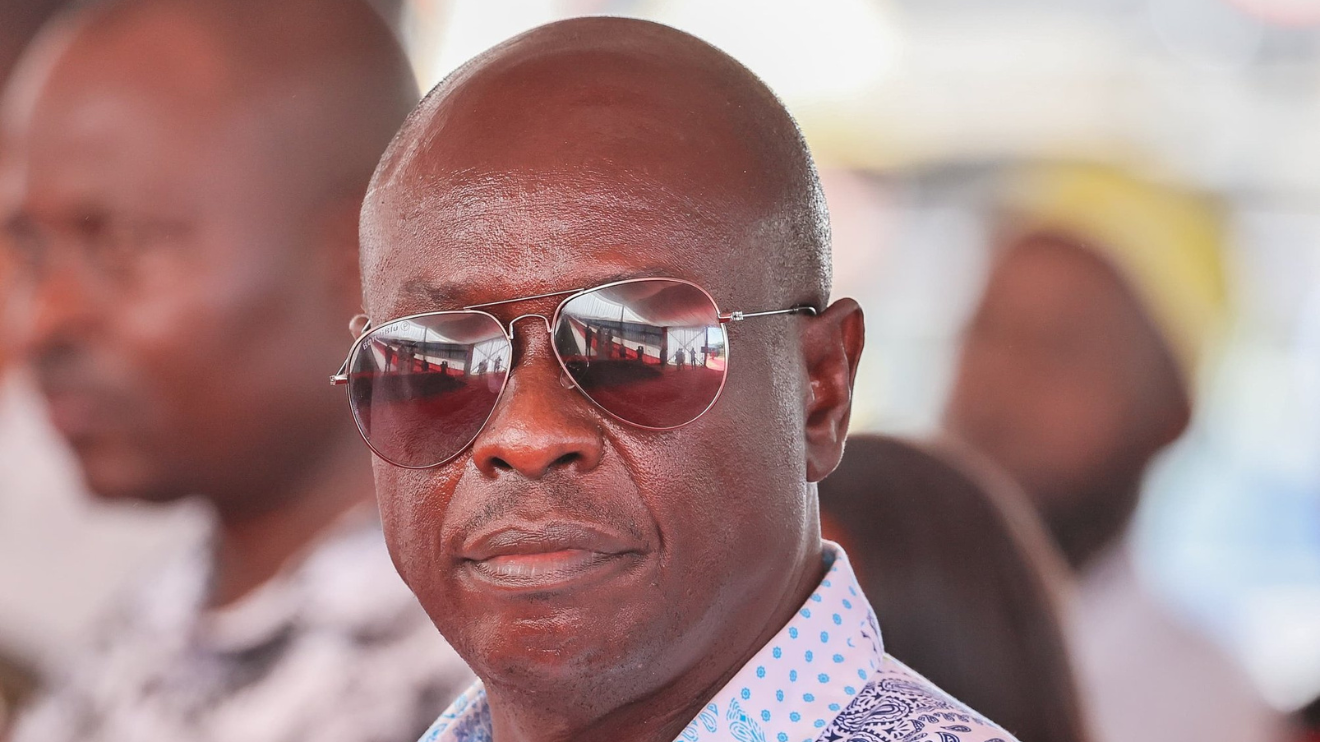
: Explore the political crisis after Rigathi Gachagua’s impeachment, its impact on William Ruto’s leadership, and the road to Kenya’s 2027 elections.
The impeachment of former Deputy President Rigathi Gachagua has upended Kenya’s political landscape, marking the first instance of such an event under the 2010 Constitution.
Accused of divisive politics and judicial interference, Gachagua’s ousting has ignited significant political tensions, particularly within the populous Mt. Kenya region, which has been a cornerstone of President William Ruto’s support base.
Gachagua has vocally criticised Ruto, describing his former ally as “vicious” and accusing him of orchestrating the impeachment.
In a fiery statement, Gachagua claimed, “The man I helped to become president has betrayed me,” while also alleging threats to his safety.
His impeachment has left the deputy presidency in limbo, with a court temporarily halting the appointment of Interior Minister Kithure Kindiki as his replacement.
Impact on Ruto’s Political Strategy
This political rift presents a dual challenge for Ruto. On one hand, it exposes cracks within the ruling coalition, with some legislators fearing backlash in their constituencies for supporting Gachagua’s removal.
On the other, it provides opposition leaders an opportunity to capitalise on perceived disunity within the government, potentially reshaping alliances as the 2027 elections approach.
Moreover, Gachagua’s removal has highlighted the volatile nature of Kenyan politics, where loyalty often shifts based on regional and ethnic dynamics.
Analysts believe Ruto must now tread carefully to maintain his hold over Mt. Kenya, a region critical to his electoral prospects.
The Way Forward
The administration must immediately stabilize governance by resolving the court dispute over Gachagua’s replacement or reconciling with dissenting factions.
Political analysts suggest that Ruto should focus on unifying his coalition and delivering tangible results to counter opposition narratives.
As Kenya moves closer to the 2027 polls, this episode underscores the importance of political cohesion and strategic messaging. Whether Ruto can overcome this challenge or face further fallout will significantly shape the country’s political trajectory.
Politics
Kenya Under Ruto: Transformative Leadership or Mounting Challenges?
Ruto’s policies have sparked mixed reactions on the social front. While he has taken a prominent role in addressing global challenges like climate change—evident in hosting a landmark summit that secured billions in clean energy investments—critics contend that his focus on international priorities has overshadowed pressing domestic concerns. Issues such as food insecurity and unemployment remain unresolved, leaving many Kenyans feeling neglected despite the administration’s ambitious global commitments.
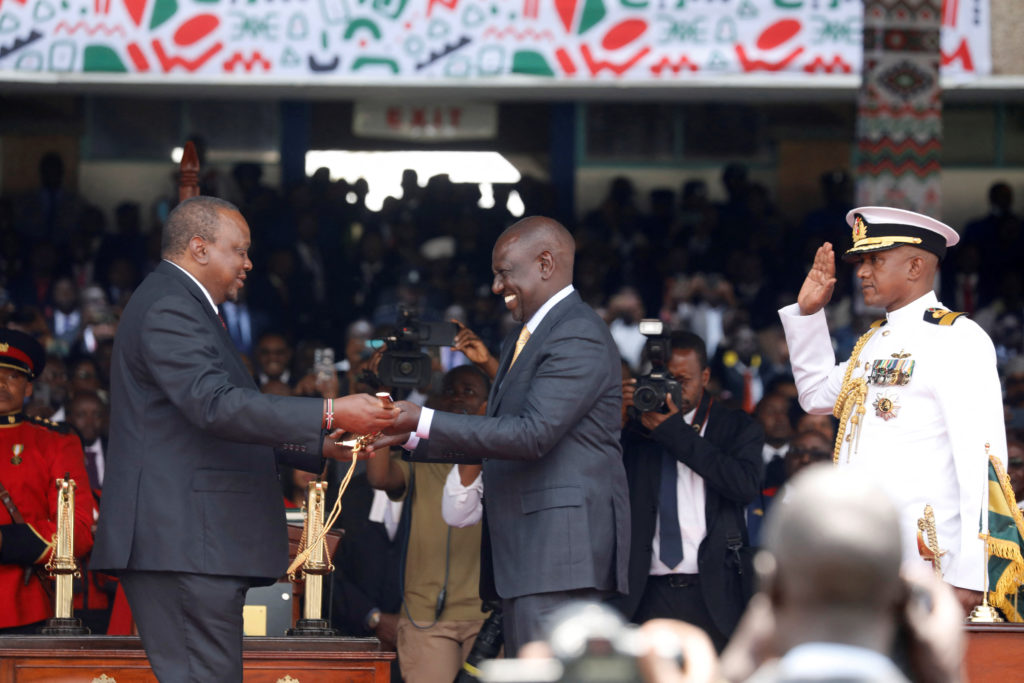
: Analyse President William Ruto’s leadership in Kenya, focusing on economic reforms, political strategies, and social challenges shaping the nation’s future.
Kenya’s President William Ruto, in office since September 2022, has faced mixed reviews regarding his leadership, particularly on economic, political, and social fronts.
Bold reforms, mounting challenges, and a mixed reception among citizens have marked his administration.
Economic Landscape
Ruto inherited an economy grappling with high debt levels ($69 billion), inflation, and global crises such as the COVID-19 pandemic and the Ukraine war.
Despite efforts to stabilise the economy, including introducing new taxes and eliminating fuel subsidies to secure loans from the IMF and World Bank, these measures have strained ordinary Kenyans.
Household essentials, including sugar and beans, saw price hikes up to 61% and 30%, respectively. Inflation moderated to 6.7% in August 2023, but economic growth is projected to be slower than the 4.8% recorded in 2022
.Key initiatives such as the “Hustler Fund,” aimed at empowering small-scale entrepreneurs, have not delivered the expected outcomes, with some analysts like Ken Gichinga calling Ruto’s economic policies “ineffective.”
However, Ruto has also promoted local manufacturing and reduced reliance on imports to support job creation.
.
Political Strategy
On the political front, Ruto has shown determination to fight corruption.
His administration has introduced measures to track government spending and eliminate payroll fraud through a Unified Personal Identification system.
He has also emphasised accountability, stating, “We shall levy a surcharge against any officer who causes a loss of public resources.” However, critics question the effectiveness of these reforms, especially in light of continued economic hardships
Ruto’s administration faced opposition-led protests over rising living costs, which turned deadly, leaving 50 people dead.
These tensions underscore the political divisions and challenges in delivering tangible benefits to Kenyans
.Social Impact
Socially, Ruto’s policies have had polarising effects. While he champions global issues like climate change, hosting a major summit that attracted billions in clean energy investments, critics argue that his focus on international engagements has left domestic issues, such as food insecurity and unemployment, unresolved.
Analysts like Nerima Wako-Ojiwa emphasise that many Kenyans are now struggling with basic needs like food, highlighting a disconnect between the administration’s priorities and grassroots realities
.Broader Context and Future
Ruto has positioned himself as a reformer, focusing on transparency and economic restructuring.
However, his administration faces the twin challenge of delivering immediate relief to struggling Kenyans while maintaining long-term fiscal responsibility.
Supporters like Joseph Mwiti argue that transformative policies take time to bear fruit, reflecting cautious optimism about Ruto’s leadership.
In sum, President Ruto’s tenure has been characterised by ambitious reforms and significant headwinds. The success of his administration will depend on balancing economic recovery, political stability, and social equity in the coming years.
-
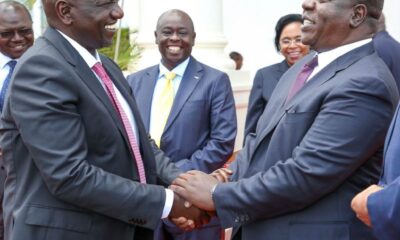
 Politics5 months ago
Politics5 months agoFred Okengo Matiang’i vs. President William Ruto: A 2027 Election Showdown
-

 Business & Money10 months ago
Business & Money10 months agoEquity Group Announces Kshs 15.1 Billion Dividend Amid Strong Performance
-

 Politics4 months ago
Politics4 months agoIchung’wah Faces Mt. Kenya Backlash Over Gachagua Impeachment Support
-
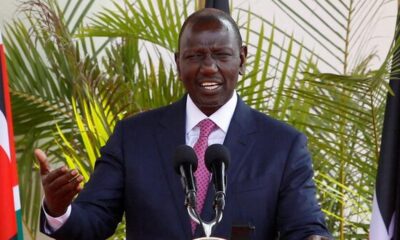
 Politics6 months ago
Politics6 months agoPresident Ruto’s Bold Cabinet Dismissal Sparks Hope for Change
-
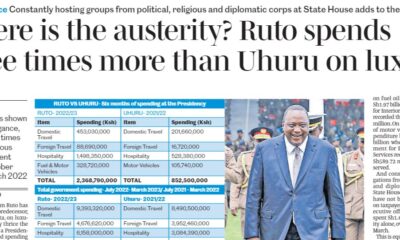
 Politics7 months ago
Politics7 months agoPresident Ruto’s Lavish Spending Amid Kenya’s Economic Struggles Sparks Outrage
-

 Politics6 months ago
Politics6 months agoJohn Mbadi Takes Over Kenya’s Treasury: Challenges Ahead
-

 Business & Money2 months ago
Business & Money2 months agoMeet Kariuki Ngari: Standard Chartered Bank’s new CEO of Africa. What’s Next?
-
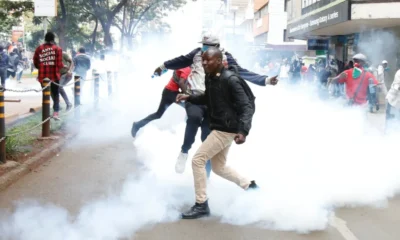
 Politics7 months ago
Politics7 months agoKenya Grapples with Investor Confidence Crisis Amid Tax Protest Fallout





